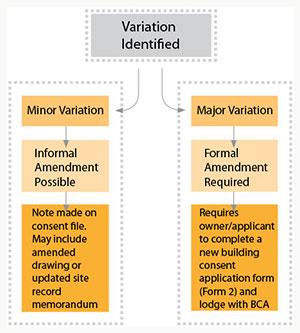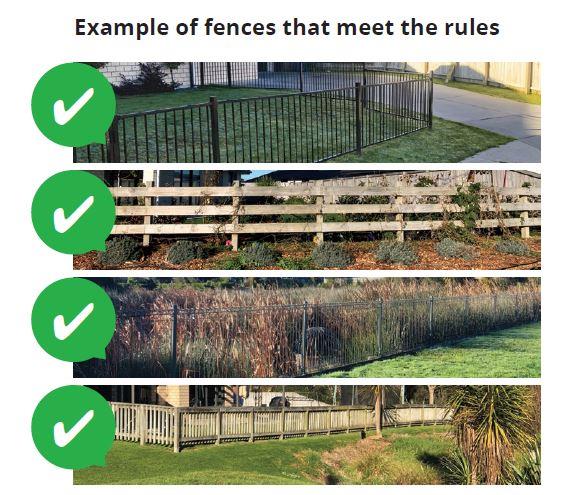
Here’s the latest information about building
consents and resource consents from Waikato District Council.
If you wish to receive this via email, you can subscribe here.
In this issue:
Changes you need to know about:
Helpful tips and reminders:
Team update
Consents Team Update
The Consents Team is tracking well. Here is a summary of our annual results for the 2018/2019 financial year:
- The Consents Team handled 1046 resource consent and related applications this financial year (July 2018 – June 2019). While this is down 16% from last year, the number of lots consented from subdivisions is high, at 1184.
- There were 3774 enquiries handled by our Duty Planners. This is down slightly (by 5%).
- The number of LIMs processed was also down slightly, by 5% at 1289, but the number of Property Enquiries processed was the same as last year at 1917.
- The team worked with eight other Waikato based Councils to produce common resource consent application forms and letters. These were launched March 2019 as part of the Aligned Planning Project.
- The team is now resourced and able to provide Duty Planner service direct from our Tuakau Office once a week, providing a local service to our northern customers.
Highlights:
- This was the first full year of processing Permitted Boundary Applications a new type of application introduced under the 2017 amendments to the Resource Management Act.
- We processed 153 of these (18% of our work) providing a quick and cost effective service for customers (consents are issued within 10 days with a small set fee).
- 871 resource consents were issued. Only 10 were not issued within the statutory timeframes (9 had delays at lodgement and 1 had a delay with a technical report).
- What this tells us:
While the overall number of resource consents and related applications handled by the Consent team is down slightly this year (1046), over the last four years numbers have continued to be elevated (average of 1104) compared to 5 years ago (only 746). This is a sustained increase of 32% compared to 5 years ago (2014/2015).
Over the past year the team have been inputting into the Proposed District Plan, and over the next 12 months we have a number of Senior Planners who will be involved in assessing submissions on the PDP and reporting to Hearings.
Since our last edition we have had a few more changes in the team, mainly with internal promotions. In the consent planning teams we have welcomed new Planner Jordon Godfrey, who joins us from another team in Council, and we have permanently appointed Georgia Morton as Planner. We have also promoted Katrina Andrews and Milan Covic to Intermediate Planners.
Building Team update
The Building Team continues to focus on pool fencing inspections. This is a Government requirement, but it also helps to keep our communities safe. We are on track to meet this statutory requirement.
We continue to work on identifying Earthquake prone buildings and notifying owners of their responsibilities. We have been able to help other councils in the Waikato Building Consent Group with inspection and processing assistance.
We are receiving good numbers of building consents in a digital format. We’re still hearing this is saving people time and money so, if you aren’t doing it already, we encourage you to start submitting your applications digitally. If you are unsure on how to do this please contact us on 0800 492 452 and ask for the building desk to get some guidance.
Our team is also continuing to focus on upskilling so that we can serve our customers better. A number of staff are working toward diploma level qualifications or attending training.

Staff Profile: Meet Kelly Cattermole
 Kelly Cattermole is one of our senior planners based in Tuakau. His job involves processing resource consents, namely land use consent and subdivision consents, but he’s also involved in a number of other activities including
co-chairing the water engineering forum and assisting the Policy team with the Proposed District Plan.
Kelly Cattermole is one of our senior planners based in Tuakau. His job involves processing resource consents, namely land use consent and subdivision consents, but he’s also involved in a number of other activities including
co-chairing the water engineering forum and assisting the Policy team with the Proposed District Plan.
Kelly has been at Waikato District Council for more than 8 years. He’s wanted to be a planner since his teenage years. “There was a proposal put forward for a large scale landfill in the Malvern Hills in Canterbury. It was subject to a lot
of public debate and it was then that I realised that I wanted to be a part of the decision making process. So from that moment I geared my education along that path through university. I got the role of processing LIM reports and planning/engineering
checks on building consents in Joanne’s team and then progressed my way into the consent planner role from there.”
He enjoys being able to assist people with problem solving through the consenting process. Outside of work Kelly likes running, gardening, rock hunting and then working up some of the rocks he collects on machines, which is called rock lapidary.
Processing statistics
Here are the latest numbers for building and resource consents, as well as LIMs and new lots.
What's happening: New Auckland-Hamilton urban growth partnership
The country's first urban growth partnership between Crown, local iwi and Councils will see coordinated development between Auckland and Hamilton.
Waikato District Council will be working with Waipa, Matamata-Piako and Hamilton councils as well as the Waikato Regional Council, Auckland City Council, Government and local Iwi to improve the way the area will grow. Representatives from New Zealand Transport Agency and Waikato District Health Board will also be involved.
The partnership will work together on issues including housing, transport and employment as well as walking and cycling trails and a rail service.
The Hamilton-Auckland corridor is a Future Proof initiative. You’ll find more information on their website or in the New Zealand Herald article, written on the day the growth partnership was announced.
Community hub taking shape in Meremere
There’s a new community hub at Meremere, with the opening of the new library on 30 August.
The new library is built right next to the community hall in Heather Green Ave and this means the community can enjoy a wider range of services from Waikato District Council at the site, including paying their dog registration, rates and waters bills
or getting rubbish stickers. There are also a number of programmes and services being offered to bring people together, foster creativity and encourage life-long learning.
The doctor’s practice that runs from the old library building is also moving up to the community hall site. The new library has been built by North Waikato company, Thorburn Builders.
Process focus:
Assessment process when there are two plans in existence – important information for you
The Proposed Waikato District Plan (Stage 1) was publicly notified on 18 July 2018 (PDP). Any application for resource consent lodged right now must be assessed under both the Operative Waikato District Plan (ODP) and the PDP to determine the outcome
of the application.
Under the ODP, a complete assessment can be undertaken as all provisions are operative. Council’s processing planner will make a recommendation to grant or decline the application under the ODP.
The assessment under the PDP depends on whether or not any of the PDP rules have legal effect. This will largely depend on whether or not decisions on submissions on the PDP have been made and publicly notified.
Assessment of PDP pre decisions:
Upon notification of the PDP, only rules that fall within the scope of section 86B(3) have immediate legal effect on notification. All other rules do not have legal effect on notification. If a rule has legal effect, it triggers the requirement for a
resource consent (other than a permitted rule) under the PDP and must be considered for the purpose of notification and the assessment under s104(1)(b).
If none of the rules applicable to the proposal under the PDP have legal effect at time of its notification, it will not be possible to complete a full assessment of the application under the PDP. In the absence of any rule having legal effect, the assessment
under the PDP will stop after an analysis of the objectives and policies (upon notification of the PDP, the objectives and policies have immediate legal effect and must be taken into account). In the scenario where no rules have legal effect, Council’s
processing planner is unable to make a recommendation whether to grant or decline an application under the PDP. Instead, the recommendation to grant or decline consent will be made solely under the ODP (where a full assessment and recommendation can
be made). The PDP objectives and policies that have legal weight can be taken into account as a section 104(1)(c) - other matters, under the ODP assessment.
However, if one or more PDP rules relevant to the proposal have legal effect, Council’s processing planner is required to assess the application against all relevant objectives, policies and rules with legal effect and make a recommendation to grant or decline consent under the PDP. If the same outcome is produced under both the ODP and PDP (eg. grant/grant or decline/decline), then no weighting between the two plans is required. However, if
a different outcome is produced under each plan (eg. a grant under one and a decline under another), it is necessary to go a step further and undertake a weighting exercise between the two plans. The outcome of the application (to grant or decline)
will be determined by the plan which is given more weight.
Assessment of the PDP post decisions:
Once decisions on submissions and further submissions on the PDP have been made and publicly notified, all rules in the PDP have legal effect. This means a complete framework of objectives, polices and rules with legal effect exists under both the ODP and PDP. Council must separately assess the application against the ODP and PDP up to the point of making a recommendation to grant or decline consent. As above, if both plans produce the same outcome, no
weighting between plans is required. Weighting is only required if a different outcome is produced under each plan. The outcome of the application will be determined by the plan which is given more weight.
If you’ve got any questions, please phone our Team Leaders: Jason Wright, Wade Hill or Ella Makin.
Appropriateness of items being bonded: we’ve created some guidelines to help
There’s been an increasing number of requests to bond conditions of consent as incomplete works.
We’ve developed some guidelines that describe the circumstances in which Council will consider bonding conditions of consent.
Key aspects are as follows:
- Bonds must either be applied for under RMA Section 108(b) or Section 222
- A minimum value of $10,000 is required for bonds to be considered
- Bonds under $25,000 will be required to be paid in cash
- A maximum of six months will be allowable for conditions to be satisfied
- No utilities or underground services will be considered for bonding.
As has always been the case, Council retains the right to accept or reject an application for bonding based upon evidence provided in accordance with the guidelines.
View the bond guidelines
Changes to be aware of: RMA Reforms 2019
Changes to the Resource Management Act will occur in two stages. Stage 1 introduces a number of relatively simple changes to improve consenting, freshwater management, enforcement and Environment Court operations.
Stage One changes, as we understand them, include:
- Remove preclusions on public notification and appeals for residential activities and subdivisions.
- Reinstate the presumption that subdivision requires resource consent unless expressly permitted.
- Reinstate the option for councils to require financial contributions to support development which was going to be repealed in 2022.
- Enable applicants to suspend the processing of their non-notified consents for up to 20 working days and enable consent authority to return the application if the applicant suspension extends beyond the 20 working days.
- Increase the time frame for lodging retrospective emergency works applications to 60 working days.
- Enable persons who are dissatisfied with a council’s notification decision to challenge this in the Environment Court rather than the judicial review process in the High Court and enable the Environment Court to make declarations in respect
of these decisions including being able to set aside any part of the notification decision or direct a council to reconsider its notification decision.
- Clarify the legal status of deemed permitted marginal or temporary activities and deemed permitted boundary activities confirming they are lawfully established ways of breaching a plan rule.
- Enable the review of conditions of multiple resource consents concurrently e.g. on a catchment wide basis, as soon as a relevant regional rule is operative, to manage water quantity and quality.
- Strengthen tools for compliance, monitoring and enforcement including increasing maximum infringement fees and extend the statutory limitation for filing charges for various prosecutions.
- Enable the Environmental Protection Authority to take enforcement action.
The Stage 1 bill to amend the RMA is currently being drafted with a view to introduce it to Parliament late 2019. Public submissions will be called for when the bill is referred to a select committee. The consents team will be watching this space and,
depending on final changes to the Act, will advise if any of our services will change.
Stage 2 will be a more comprehensive review of current resource management including urban development, climate change, freshwater management, urban tree protection, plan making timelines and reducing complexity. An issues and options paper on the Stage
2 reform is signaled to be released late 2019.
You'll find more information on the Ministry for the Environment website.

Helpful tips and reminders
Here are some tips and reminders that we hope will make it easier for you when you are working with us, or when you are compiling an application.
Affected Person Form
Over the past six months we’ve noticed an increase in Affected Person forms for Permitted Boundary Activities (PBA) being lodged with other resource consent applications.
Please be aware that Council has specifically designed Affected Person Forms for PBAs. These cannot be interchanged with other resource consent applications. If you require written approval for any other resource consent application (other than a PBA)
we have a separate affected person form for this purpose.
View the Permitted Boundary Activity form
Building Amendments – things to note
All amendments must be approved and recorded by the building consent authority.

A quick reminder when looking to make amendments to your building consent application:
- Where the proposed amendment are defined as a minor variation as per MBIE’s guidance Waikato District Councils will considered these for acceptance on site at time of inspection by the building inspector, please discuss this at time
of inspection. The building inspector will document the minor variation, this is to enable works to progress without further processing fees and to try ensure that there are no further delays on site awaiting processing.
- Where amendments are defined as a major amendment under MBIE’s guidance, then under the Building Act 2004 we are required to ensure submission of a formal application in the correct format on the prescribed forms.
View the MBIEs guidance on minor v’s major.
When submitting a major amendment, please ensure it is submitted in the correct format on the correct form:
- Fill in Form 2 – Application form PIM and /or Building consent for the amendment
- Applicant’s checklist (tick where applicable) for the amendment
- Letter of Authority from the property owner for the amendment
- The amended plans and specification for the amendment only.
Development Contributions – important information to builders, developers and owners
Builders, developers and owners cannot presume that all development contributions have been paid at the time of subdivision.
View the current Development Contributions Policy.
If you’ve got any queries on specific properties please email DevelopmentContributions@waidc.govt.nz and provide the specific property number and/or property address.
Development contributions policies, capital works schedules, catchments and levies are subject to review and change.
Credits are given for any development contributions paid at the time of subdivision but additional development contributions may be required at time of building consent or service connection.
Fences on reserves – Franklin section of the Waikato District Plan
Does your fence comply with the rules? Did you know there are certain rules that apply to fences on reserve boundaries and road frontages?
Fences above 1.2m in height that are close-boarded or of similar solid construction are not allowed and require a resource consent.
One of the reasons for this rule is to ensure public safety by allowing clear vision from the house to the street. It also ensures that there is no visual dominance caused by high front fences; that the reserve is an attractive, pleasant space for people
to use.
If you are unsure if your fence is compliant, or if you have any concerns or questions, please contact us on 0800 492 452.

Common Further Information Requests on Building Consent applications
- Confirm of timber treatment for floors in wet areas.
- Garage and Farm Building consents - All garage/sheds and farm buildings consents must include a stormwater management plan & drainage plan demonstrating how the proposed design meets the requirements for Building Code E2 with regards to storm water.
- Please supply elevation drawings and window schedule designating the individual glazing units compliant with AS/NZS4223.3
- Producer statements are to be issued to the correct council ‘Waikato District Council’.
- Certificates of design works are to be completed fully and in-line with MBIE guidance.
Common reasons CCCs are failing the final inspections
- Customers not having final documentation ready prior to or at the final inspection
- We often find penetrations through the cladding are unsealed (Outside taps, Gas and water pipes)
- Landscaping of the property is not always complete at final inspection. This means cesspits are not installed and we are unable to check the finished ground levels comply.
- Smoke alarms are not being installed.
- Hot water cylinders have not been switched on so we are unable to test the water temperature.
- Wet areas (Bathrooms, Toilet, Laundry etc) impervious surfaces not completed.
We’d love to get your feedback
We’re interested in what you think about this newsletter so we can improve it over time. Click here to provide feedback.